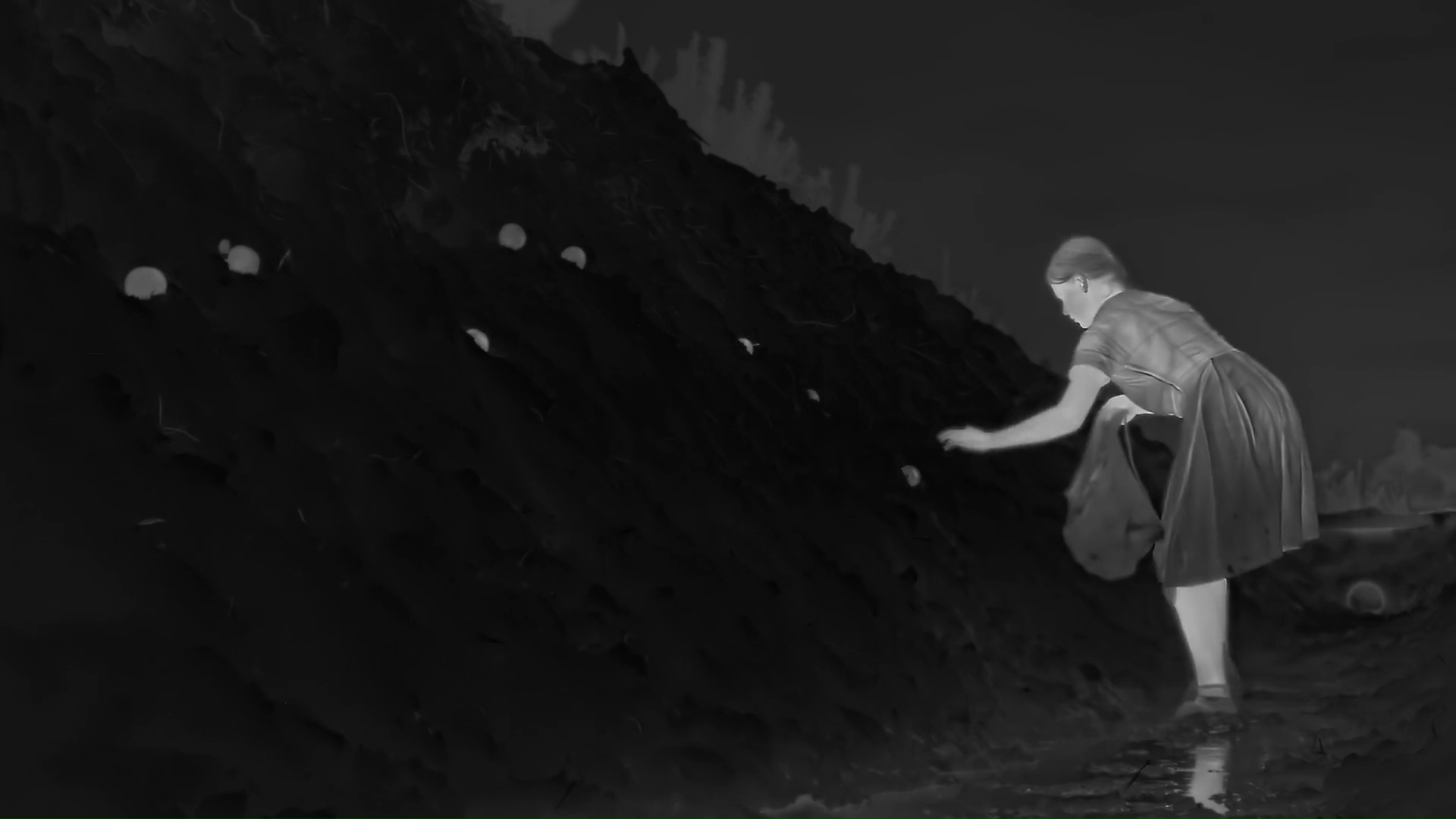Jonathan Glazer’s The Zone of Interest is a masterpiece, born from another masterpiece: the novel by Martin Amis.
Jonathan Glazer doesn’t just adapt Martin Amis’s The Zone of Interest; he distills it to its essence (much like he did with Michel Faber’s novel in Under the Skin). He strips it down, exclusively retaining what can be shown. There are three stories in the novel: two involving SS officers and one a Sonderkommando. Glazer synthesizes the first two and omits the last, which then reappears in documentary form (text at the bottom, like subtitles, to the rhythm of music but without voice—this is no coincidence). What remains is the obscenely calm life of Rudolf Höss, the first commander of the Auschwitz concentration camp, and his little family.
The inhuman comedy, just outside the camp. A house with servants. A well-tended garden. The problems? How to raise the children. How to balance the personal with work. And then, of course, how to gas them all. Mere logistical questions. The banality of evil, in its purest form. It’s as if Glazer simplifies Amis to a device. Just right: literature translated into cinema. The word becomes the right image. The Zone of Interest is, above all, a question of how. A how that is a summa and cliff notes of theories on the (im)possibility of representing the Holocaust. A formal synthesis. Simple. Clear. Brilliant. Ten cameras, remotely controlled, watch over the house and garden. In front of these, only the actors: called to a historical re-enactment that is meant to be with a lowercase ‘h’, to relive the daily peace a hedge away from abjection. As if nothing were amiss. Like in a reality show: the house and garden are places where a total, celestial visibility reigns, believed to be absolute. So much so that everything is edited to emphasize movement transitions, following people moving from one room to another, from one (video)camera* to another.
As if to construct, cut after cut, their own closed world, as if to cross only internal borders. Because the thresholds the characters choose to cross are exclusively those, comfortable, of their own scene. No close-ups: the point is the set. The logic, the ideology, of this worldbuilding. Beyond, there’s the unspeakable. The unrepresentable. The obscene. The off-screen. The film opens in black, with Levi’s score reconstructing the possible sound of hell. Then there will also be white, and red, in noise. But of that icy reality show (which is a prequel to Loznitsa’s Austerlitz) there is not only the off-screen but also the negative: the inserts of a girl hiding food in the camp, shot with thermal cameras.
The only form of warmth. An abstract image, not belonging to that reality, to the forms of its visibility. Finally, there’s the only possible counter-shot: in the film’s sole gaze connection, in a Kubrickian cut, Höss sees – through a hole in the black (and not by chance while vomiting blood) – images of Auschwitz today, a snippet of a documentary about workers at the site. The eye leaves the scene, enters History. This is a contemporary film: about echo chambers, beyond denials, disparities of visibility. Not just a film about the Holocaust. The why is for you to grasp.
Giulio Sangiorgio
Film Tv, February 22, 2024
NOTES
* “Camera” in Italian means “room”





